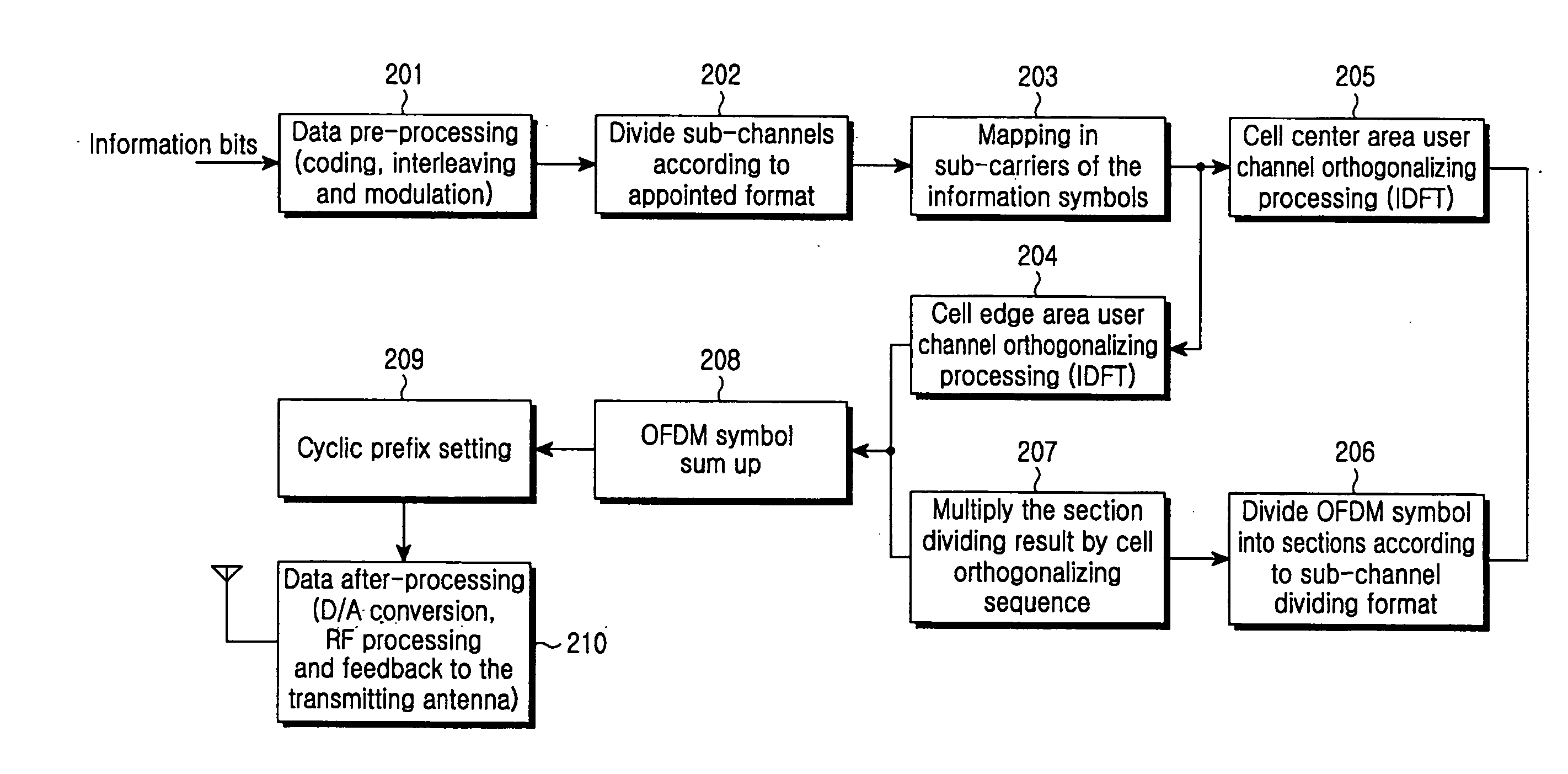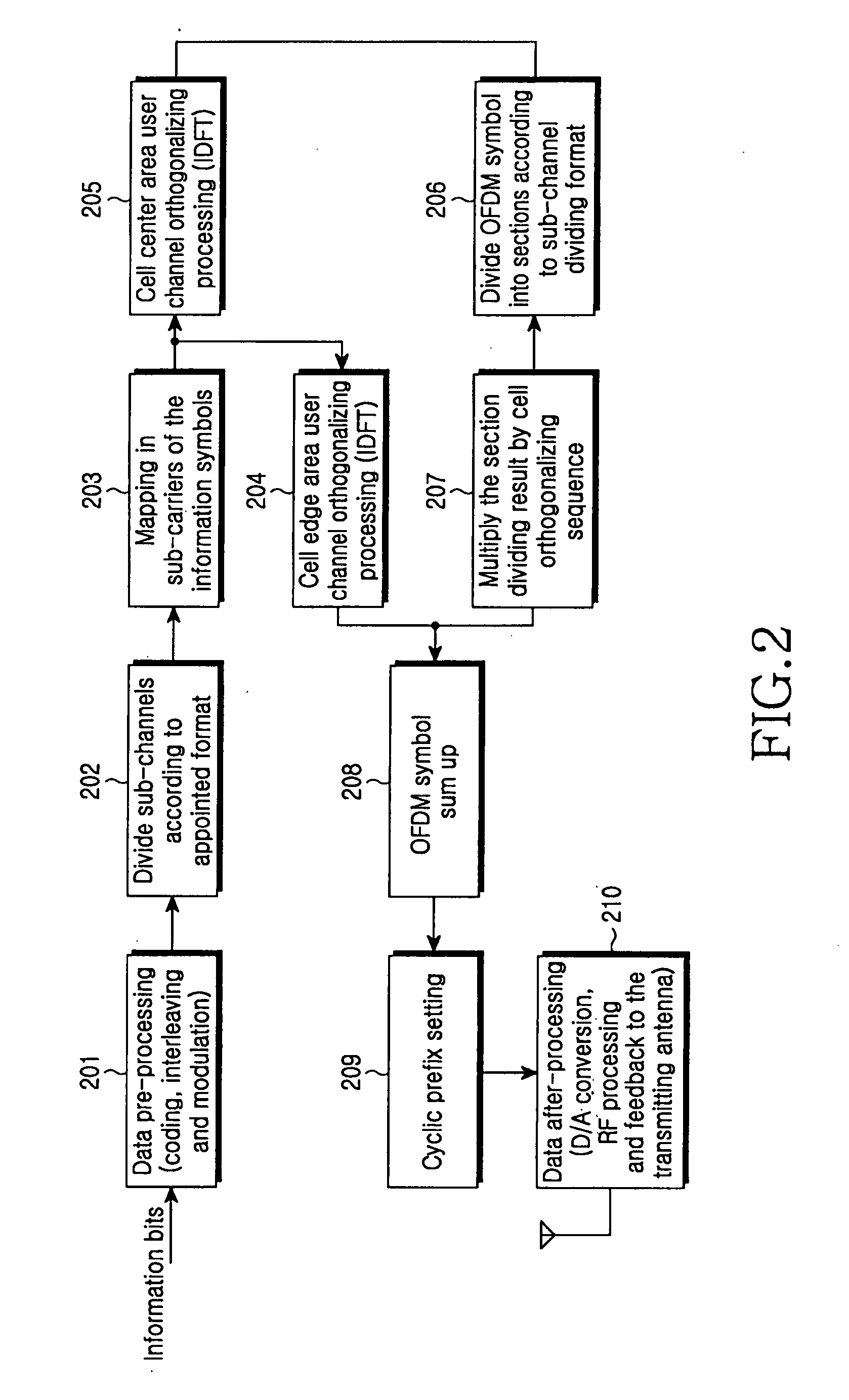Method and system of orthogonalizing signal transmitted from BS applied to OFDM access
a technology of orthogonalizing signal and orthogonal frequency division, applied in the field of cellular communication system applied to orthogonal frequency division multiplexing (ofdm) technology, can solve the problems of affecting the reception performance of ue, affecting the quality of communication of users at the edge of the cell, and inevitably suffering frequency interference from adjacent cells. the effect of increasing system capacity and improving communication quality
- Summary
- Abstract
- Description
- Claims
- Application Information
AI Technical Summary
Benefits of technology
Problems solved by technology
Method used
Image
Examples
Embodiment Construction
[0029] Preferred embodiments of the present invention will now be described with reference to the accompanying drawings. In the following description, descriptions of known functions and configurations will be omitted when it may make the subject matter of the present invention rather unclear.
[0030]FIG. 1 shows cell edge interference in an Orthogonal Frequency Division Multiplexing / Orthogonal Frequency Division Multiple Access (OFDM / OFDMA) system. This demonstrates the problem resolved by the present invention. However, while the structure of three sectors in the cell of FIG. 1 is just one example, different sector division cases can be similarly addressed according to the present invention. When UE1 belonging to the serving cell is receiving information through some sub-channels, UE1 actually receives signals sent from interference cell 1 to UE3 belonging to UE3 through the same sub-channel, and signals sent from interference cell 2 to UE2 belonging to UE2 through the same sub-cha...
PUM
 Login to View More
Login to View More Abstract
Description
Claims
Application Information
 Login to View More
Login to View More - R&D
- Intellectual Property
- Life Sciences
- Materials
- Tech Scout
- Unparalleled Data Quality
- Higher Quality Content
- 60% Fewer Hallucinations
Browse by: Latest US Patents, China's latest patents, Technical Efficacy Thesaurus, Application Domain, Technology Topic, Popular Technical Reports.
© 2025 PatSnap. All rights reserved.Legal|Privacy policy|Modern Slavery Act Transparency Statement|Sitemap|About US| Contact US: help@patsnap.com



